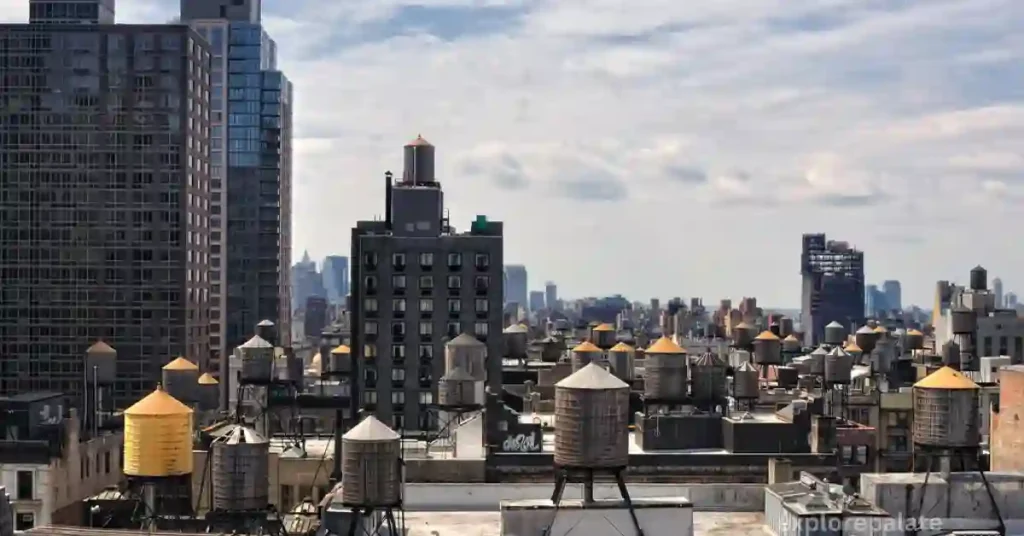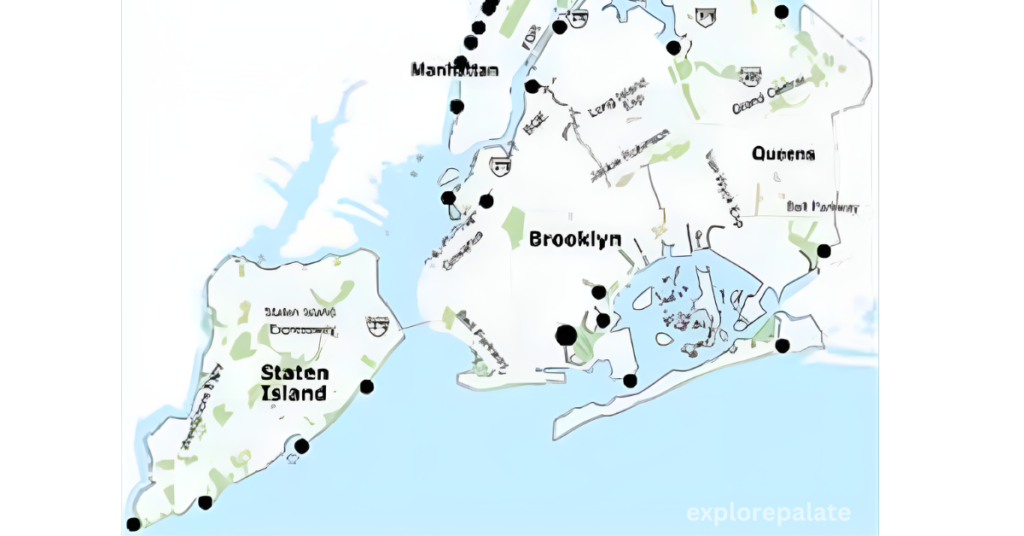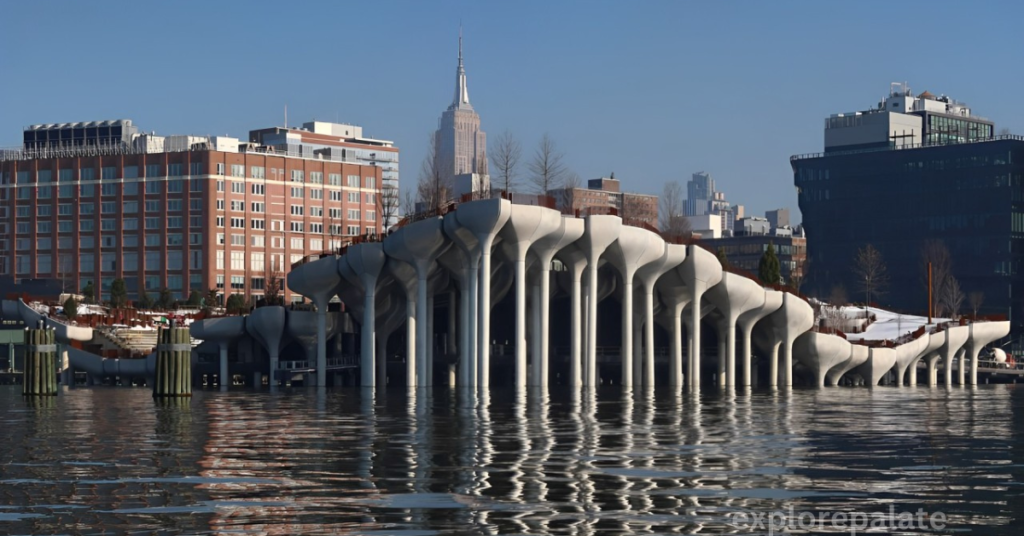In the heart of New York City, the distinctive silhouette of water towers perched atop buildings is not just a charming throwback; these architectural features are crucial to modern living. As a New Yorker and architecture enthusiast, I’ve come to appreciate these relics of a bygone era that resemble rustic wooden barrels, knowing they ensure compliance with the city’s stringent water pressure requirements. Despite being used for over three decades, these towers remain indispensable, undergoing routine inspections and maintenance—a testament to the city’s commitment to preserving its historical identity while addressing contemporary problems.
Origin Of NYC Water Towers

In the 1800s, the burgeoning New York area found its rich waterways overshadowed by industry-induced grime and unsanitary conditions. Settlers spurred a transformation when The Citizens Association of New York, with wealthy New Yorkers at the helm in 1864, took up the mission to improve living standards by ensuring a supply of fresh, clean water. Fast forward to 1870, and the Department of Public Works laid down extensive drainage systems, setting the stage for the 1880s advent of indoor plumbing. This revolution necessitated the rise of water storage tanks, now an integral part of the city’s skyline, signifying a sustained lifeline of cleanliness and health in the ever-adaptive tapestry of New York.
Water isn’t the only thing in your building’s water tower

In the heart of Victorian England, the Industrial Revolution was at its peak, transforming the landscape with pioneering mechanization. Amidst this upheaval, society saw a burgeoning cohort of inventive minds eager to leave their mark on history. Among these were entrepreneurs and philanthropists, motivated equally by profit and public good, who set about resolving the era’s most pressing issue: the scarcity and contamination of water. Their resolution came in the form of intricate aqueducts and filtration systems, which not only quenched the thirst of cities but also significantly reduced the grip of waterborne diseases.
As the century turned, these innovations became entrenched in the fabric of urban life, with municipalities assuming responsibility for ensuring safety and reliability. The result was a dramatic expansion in both the availability and quality of potable water, encapsulating an era defined by the balance of industrial progress and public welfare. These efforts laid the groundwork for modern water systems, proving that the legacy of the Victorian era continues to influence and provide for our fundamental needs.
What to expect when your building’s water tower is replaced
In the late 1800s, as the Industrial Revolution soared, the New York area witnessed an unprecedented expansion marked by industry, prosperity, and unfortunately, a decline in sanitary conditions. The rich waterways that once ran clear began to suffer under the weight of progress. It was the mission of The Citizens Association of New York, spearheaded by wealthy New Yorkers in 1864, that set in motion the efforts to improve the city’s living standards. By harnessing the civic energies of its settlers, the city embarked on an ambitious plan to guarantee fresh, clean water for all its inhabitants.
The triumph of these efforts was truly felt in the 1870s as the Department of Public Works implemented comprehensive drainage systems, revolutionizing the city’s approach to water sanitation. By the 1880s, the emergence of indoor plumbing reflected the technological advancements of the age, and the characteristic water storage tanks began to dot the city’s skyline. These developments were a testament to New York’s commitment to public health and cleanliness, creating a legacy that would carry forth into the future, shaping the city’s identity and skyline for generations to come.
How Many Water Towers Are In New York City?

Though often missed by the hurried eye, around 15,000 water towers are dotted across the rooftops of New York City, not just as silent sentinels of history but as vital contributors to the city’s functionality. These tanks, primarily wooden and seen as more eco-friendly and efficient than their steel counterparts, were built more than 100 years ago yet continue to meet the daily water needs of many high-rise buildings and even to extinguish fires.
Beyond their practical use, these structures shape part of the identity of the city. Local artists occasionally honor these towers, using them as canvases to pay tribute to their enduring presence and significance. Amongst the specialists in the field, companies like American Pipe and Tank have been pivotal in servicing and maintaining these modern marvels, ensuring they function seamlessly amidst the city’s ever-evolving skyline.
Where Does NYC Have Water Towers?
In the bustling mosaic of New York City, the skyline is dotted with iconic structures known as water towers, essential yet often overlooked. These wooden, weathered structures, sometimes crafted from untreated wood to prevent chemicals that could pollute the water, can hold about 10,000 gallons of water and are built to last 30-35 years. Across the city, whether cloaked behind newer buildings’ aesthetically pleasing designs of glass and steel or standing exposed, these towers operate with a simple yet effective mechanism.
A float valve, much like in a simple toilet, automatically refills the tank when the water level recedes, ensuring the city has a continuous water supply. They operate around the clock, filling and disbursing water within 24 hours, and using natural materials like wood, which acts as a natural insulator to prevent water from freezing in winter. This blend of functionality and heritage makes these towers not just functional infrastructures but also iconic parts of New York’s concrete jungle.
Know your rights as a tenant

In the heart of New York City, the iconic water towers stand as integral components of the urban landscape, ensuring consistent water supply to high-rise buildings. These cylindrical, wooden structures, though often appearing weathered, are meticulously designed to prevent water pollution and effectively manage water pressure.
Each tower has a capacity to store approximately 10,000 gallons of water, crucial for daily city operations, using a float valve system to maintain necessary levels by automatically refilling when water dips below a certain point. Crafted to endure, these towers typically last 30-35 years, embodying both function and history, symbolizing New York’s resilience and architectural ingenuity.
Conclusion
In sum, water towers in New York City transcend their historical heritage to serve crucial contemporary functionalities. Far from being mere antiquated relics, these structures are essential for maintaining water pressure and ensuring a reliable water supply for high-rise buildings.
Their continued presence and necessity along the cityscape highlight a remarkable blend of historical preservation and modern utility, managing to meet today’s urban demands while preserving an iconic aspect of the city’s architectural identity. Routinely maintained and inspected, NYC’s water towers not only embody the city’s resilience and adaptability but also continue to support public health and safety, proving themselves as indispensable assets in the city’s infrastructure.
You Might Also Like
FAQs
What is the purpose of the water towers in NYC?
Water towers use gravity to help create pressure in pipes on the upper floors. These wooden towers are still the water source for many of the city’s buildings, and they also contain enough water to feed the sprinklers if there’s a fire.
What is the purpose of a water tower in a city?
Water towers are located on high ground to provide enough pressure to send water into a municipal water supply with enough force to supply all the customers in the area. A water pressure of about 0.43 PSI (pounds per square inch) is provided by every foot of height in a water tower.
What are water towers used for today?
In order to regulate and maintain pressure and water levels throughout a system, water towers are used to store treated water and manage flow. One pipe typically controls both the intake and outtake from the storage area.
Do NYC water towers freeze?
While ice may form on the surface of the water in the tower, it usually doesn’t freeze completely, allowing it to remain in use even in winter. The ice tends to float on the surface, rising and falling with the water level.




